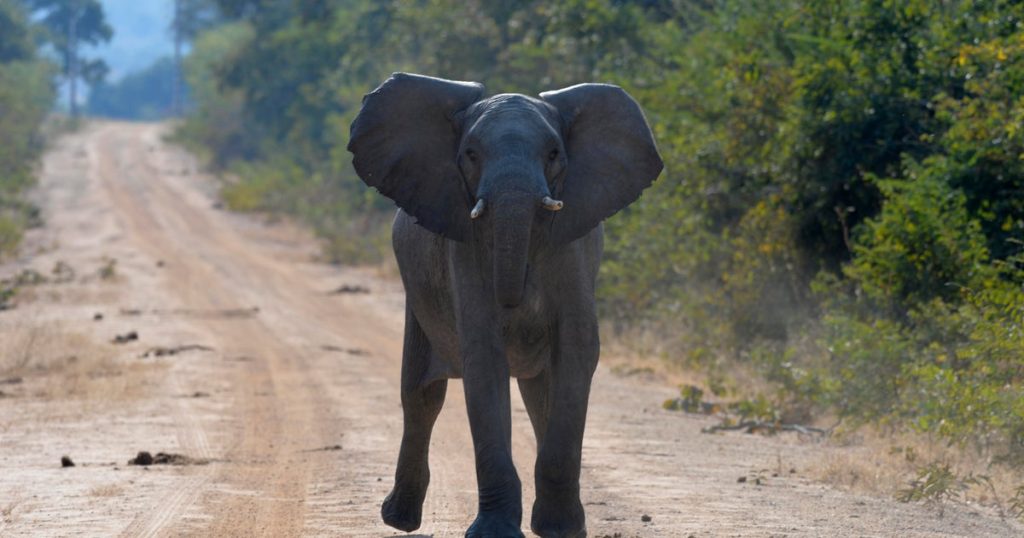In a tragic incident at South Luangwa National Park in Zambia, two elderly female tourists were killed by an elephant while on a walking safari. The victims, identified as 68-year-old Janet Taylor from the U.K. and 67-year-old Alison Taylor from New Zealand, faced an unexpected peril that underscores the dangers associated with wildlife encounters. This fatality comes nearly a year after two U.S. tourists faced similar fatal outcomes due to elephant attacks in the country.
| Article Subheadings |
|---|
| 1) Incident Details and Immediate Response |
| 2) Previous Attacks and Context |
| 3) The Nature of Elephant Behavior |
| 4) Other Recent Wildlife Incidents |
| 5) Safety Measures and Tourism Implications |
Incident Details and Immediate Response
The tragic event occurred when Janet Taylor and Alison Taylor were part of a guided walking safari in South Luangwa National Park, located approximately 370 miles from Zambia’s capital, Lusaka. Eastern Province Police Commissioner Robertson Mweemba reported that the women encountered a protective female elephant that was with its calf. Recognizing the imminent threat, the safari guides attempted to deter the charging elephant by firing shots, successfully wounding the animal. However, despite their efforts, they could not prevent the elephant’s aggressive assault, which ultimately resulted in the deaths of both tourists at the scene.
Previous Attacks and Context
This incident is not an isolated case; it mirrors previous occurrences in the region, particularly a year prior when two American tourists, Juliana Gle Tourneau from New Mexico and Gail Mattson from Minnesota, were killed in separate encounters with elephants. In those instances, the women were also elderly and found themselves on safari vehicles when they were attacked. This history of incidents raises concerns about the increasing dangers faced by tourists in wildlife hotspots in Zambia and suggests a pattern that authorities must address to prevent further tragedies.
The Nature of Elephant Behavior
Understanding the behavior of elephants is crucial for anyone engaging in activities in their habitats. Female elephants, especially those with calves, exhibit strong protective instincts and can become aggressive if they perceive a threat to their young. This innate behavior underscores the complexity of wildlife interactions in regions where human and animal environments overlap. As safari activities increase in popularity, it is vital for tourists and tour guides alike to be educated about wildlife ethics and safety protocols to minimize risks during such excursions.
Other Recent Wildlife Incidents
The tragic fatalities of the two elderly tourists are part of a concerning trend regarding elephant encounters worldwide. Similar incidents have occurred in various locations, illustrating the potential risks involved. For example, in April, a 54-year-old man in Kenya was killed by an elephant, while in January, a tourist met a similar fate at the renowned Kruger Park in South Africa. Moreover, a series of incidents in Thailand where tourists were injured or killed by elephants has prompted greater scrutiny regarding animal treatment at tourist attractions and sanctuaries. These incidents collectively highlight the urgent need for careful management of wildlife tourism and the implementation of robust safety measures.
Safety Measures and Tourism Implications
Following the latest tragedy, industry experts and wildlife officials may need to reevaluate existing safety protocols and procedures in place during tours. This recalibration should include more extensive training for guides on animal behavior and emergency response tactics to enhance the safety of tourists. Additionally, there may be a need for stricter regulations on walking safaris, including limitations on visitor numbers, briefing sessions about wildlife interactions, and mandatory adherence to safety protocols. Failures in tourism management could have long-term implications for the sector, particularly if fatal incidents become more commonplace, discouraging visitors from exploring Zambia’s unique wildlife heritage.
| No. | Key Points |
|---|---|
| 1 | Two elderly tourists were killed by an elephant while on a walking safari in Zambia. |
| 2 | Safari guides attempted to stop the elephant’s charge but were unsuccessful. |
| 3 | Similar attacks have occurred in the past, raising safety concerns for tourists. |
| 4 | Female elephants are known to be protective of their young, leading to aggressive responses. |
| 5 | Experts recommend reassessing safety protocols for tourism activities involving wildlife. |
Summary
The fatal attack on two elderly tourists in Zambia highlights significant safety concerns associated with wildlife tourism. With a history of similar tragic incidents, both in Zambia and globally, authorities and industry stakeholders must take urgent action to ameliorate the risks posed to visitors. Implementing robust safety measures, raising awareness about wildlife behavior, and refining tourism practices are imperative for maintaining the integrity and safety of wildlife encounters.
Frequently Asked Questions
Question: What safety measures are in place for tourists on walking safaris?
Walking safaris typically involve trained guides who are educated about animal behavior and emergency protocols. However, specific measures can vary widely, and ongoing training and guidelines are necessary to ensure tourist safety.
Question: Why do elephants charge at humans?
Elephants may charge when they perceive a threat, particularly when they are protecting their young or if they feel cornered. Understanding animal behavior is crucial for minimizing encounters that could lead to aggression.
Question: What are the implications of these incidents on wildlife tourism?
Tragic incidents can lead to a decline in tourism as potential visitors may feel unsafe. It calls for stringent regulations and enhanced safety protocols to ensure the well-being of tourists while preserving wildlife habitats.


